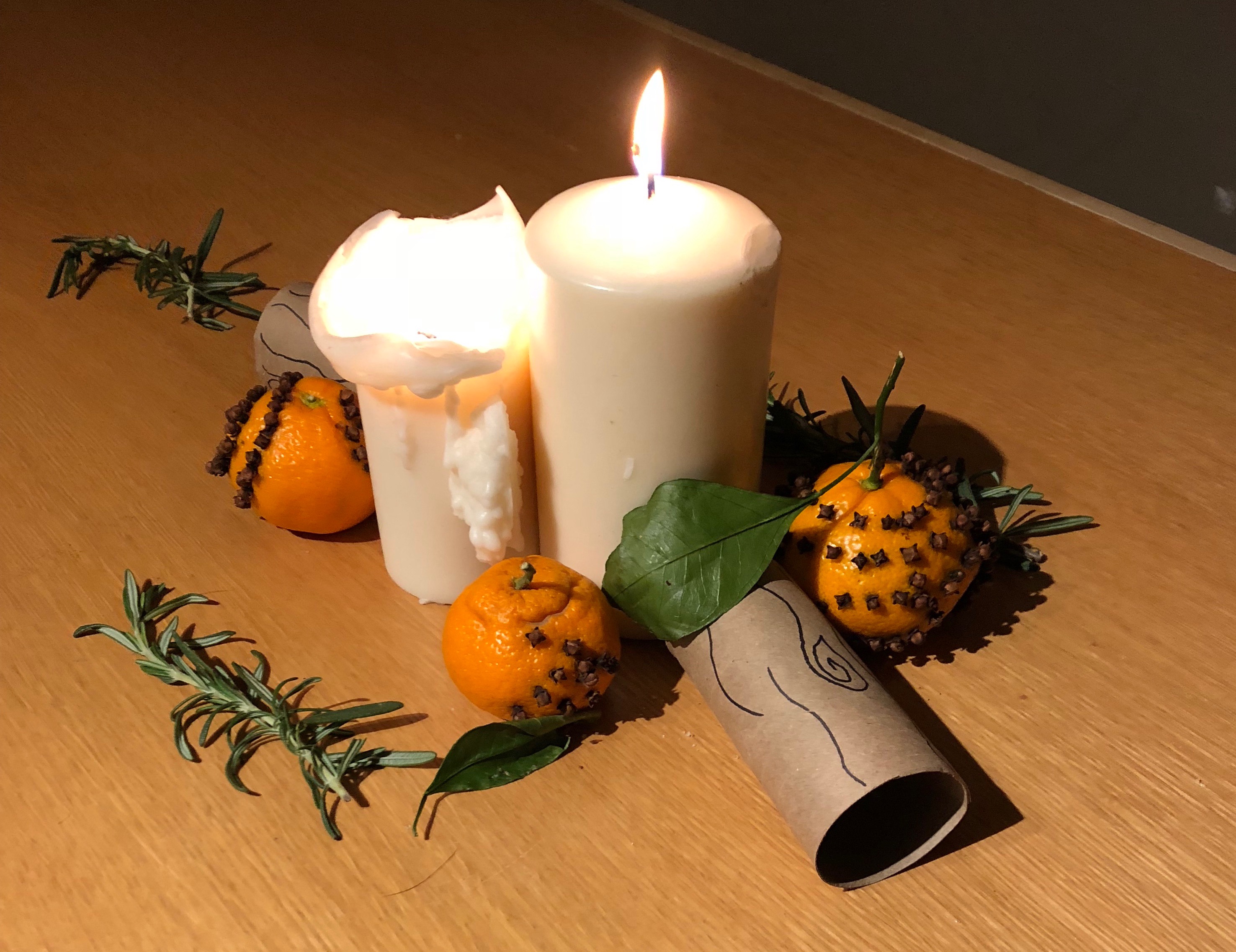The older I get, the more quickly the weeks, months, and years seem to fly by. I partly attribute this to the shifting balance of the years behind me versus the years ahead. The greater factor, however, may be the prominence of the calendar itself, always catapulting us toward the next celebration. As a teacher and a parent, the days are a run-on sentence, tumbling without pause toward the exclamation point of Halloween, the winter holidays, Valentine’s Day, and birthdays. Each of these involves so much stuff. While my family and I are far from escaping the inevitable accumulation of stuff, we’re taking steps toward changing our consumerist tendencies. At the heart of our intentions is the desire to raise our children to be kind, thoughtful humans who value giving more than taking and who appreciate all that they have.
Birthdays
With grandparents just a few miles away and well-intentioned family friends sprinkled throughout the area, my boys have no shortage of gifts at times of celebrations. When it comes to birthday parties with friends, I’ve found a few ways to emphasize the celebration itself instead of the gift-wrapped stuff that comes with it.
When my oldest was born, we were living in a small apartment in Seattle. The flat had just about enough room to house an exersaucer, a tub of toys, and a shelf of board books. Being the oldest, my firstborn had the most elaborate celebration. Each detail was fully coordinated to fit into the neat packaging of a Very Hungry Caterpillar theme. My son, of course, remembers none of it. With little space to house gifts, and with the realization that my son would have no understanding of why people were congregating around, singing to him, and then lighting a small waxy stick on fire, my husband and I had a no-gifts policy. A no-gifts policy can be tricky. People are used to the shopping, buying, and giving that accompany birthday parties. Over the years, I’ve come across three ideas that put a twist on the idea of giving:
- Book donations: A quick Google search reveals plenty of organizations happy to receive new or gently-used children’s books.
- Book swap: Each guest brings a wrapped book to the party; each guest leaves with a different wrapped book instead of a well-intentioned goody bag full of candy and knickknacks.
- Donations to charities: For my sons’ birthdays last year, we suggested donations to The Birthday Party Project, a non-profit organization that hosts monthly birthday parties for children in homeless shelters and transitional housing facilities.
Although my children have attended enough birthday parties to know that gift giving is the norm, they accept our approach without question. They still receive plenty of gifts from family and friends, but they understand that the focus of their birthday parties is to spend time with others. That’s more important to them than anything wrapped in paper could ever be.
Winter holidays
My husband and I are not in the least bit religious. Instead, we’re an atheist/agnostic/pagan blend. The result of our own childhood December traditions in vaguely monotheistic households is that we celebrate a secular Christmas. Gifts are an inevitability of the season, but we’ve found a way to balance the expectations and infuse a little bit of something else.
Kindness Elf
The creativity so many parents demonstrate with the cheeky elves that find their way into homes in December impresses me. Trying to cleverly position an elf for so many consecutive evenings overwhelms me. And so, I’ve never even tried to embrace that tradition. Fortunately for me, I discovered the Kindness Elf a few years ago. In 2014, my family gained a little elf named Adelaide who was born in a land called Etsy. She introduced herself in a letter to the boys, explaining that she would help them give back to others during the holiday season.
Adelaide leaves a note for the boys to find some mornings. Not every morning, just some. Simple as that. Each note suggests a kind contribution the boys can make that day. Adelaide suggests making cookies for our neighbors, writing a thank you note for the mail carrier, helping Mummy and Daddy fold clothes (my favorite), and so on. Occasionally, she makes her presence known mid-year when the boys are in need of a kindness reminder. Our Kindness Elf’s suggestions are saved as a Word document, each suggestion typed within the shape of a heart. I can tweak them at the start of December, print them out, hide them away, and choose one to leave out when I know the next day will provide us enough time to ensure the kindness becomes a reality. Sometimes Adelaide suggests that the boys themselves think of a kindness to share. She’s a fairly no-fuss addition to the season who fills our thoughts with something more than I want, I want, I want.
Winter Solstice
Tucked in just before Christmas Day, the winter solstice gives us a celebration that focuses on our connection to the world around us – and with no expectation of stuff. Just like Christmas, Yule celebrates birth. Days before church nativities add a baby to their mangers, my family recognizes the end to winter’s dark days. The traditions are simple. We start with a pancake breakfast, with ray-like orange segments surrounding our pancake sun. We make pomanders, poking cloves into oranges that will decorate our dinner table. For dinner, we eat grilled cheese sandwiches and Sun King Soup, the latter being an orange juice-infused variation of tomato soup, topped with a sprig of rosemary. We eat by candlelight, listening to the Beatles “Here Comes the Sun,” while digging into a chocolate Yule log for dessert. We think about our place in nature, appreciating our connection to all that surrounds us beyond the stuff within our home’s walls.
The beauty of creating a new tradition for our family is that the day is just for the five of us. Thus, it’s free from time constraints and balancing others’ visions of how the day should look. Of course, the boys still eagerly look forward to the wrapped packages and relatives that will greet them a few mornings later. As they grow, the memories of the packages’ contents will surely fade. Hopefully, they’ll see the value in pausing during the holiday season to live a day with a little more awareness and appreciation.
Valentine’s Day
Valentine’s Day parties at school are a bit like birthday party goody bags times ten. The decorated mailboxes my children take in to school return home overflowing with paper cards, conversation hearts, and trinkets. Valentine’s Day’s message of love is fine. What troubles me is that the message feels superficial. It hides in the mound of stuff. As soon as Christmas, Hanukkah, and New Year’s Eve leave stores’ shelves, pink and red displays fuel Valentine’s Day. I want my children to understand that expressing our love to others shouldn’t be reserved for one day a year.
While I do want them to appreciate material gestures, I also want them to recognize that evidence of love exists in other ways. It’s not just about the stuff. Now, the boys can’t go to school empty-handed on February 14 just because of their parents’ shared opinion. Once again, we’ve found a way to put a twist on tradition. As a family, we choose a charity to which we make a donation on behalf of the boys’ classes. The boys join their classmates in handing out cards, but their cards include a note about the donation. I’m sure others quickly cast aside these notes over the lure of lollipops. That’s OK. The takeaway is meant for my boys.
Wrapping it up
Pushing back against the stuff that threatens to inundate us seems overwhelming at first glance. With a little bit of creativity, doing so is easier than it might appear. Whether you’re comfortable with the stuff or crave a way to minimize it, what matters most is the messages we give to our children about gratitude. If they can feel gratitude for all that they have and express gratitude for all that they receive, then they’re already on their way to being the generation that our world needs.













